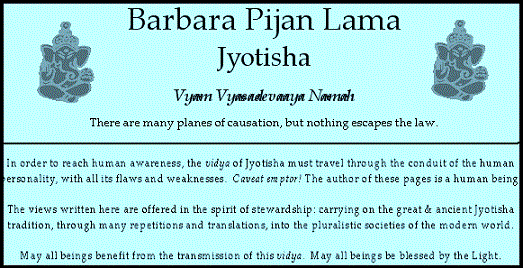
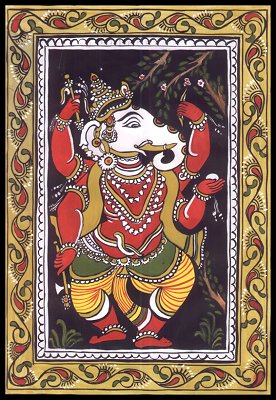
Shri Shri Gana-pati, Lord of the Gana
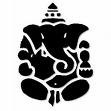

AUM som somaya namah
AUM hreem shreem chandraya namah
OM shram sreem shraum sah chandraya namah
Gana of the Nakshatra
devya, manushya, raksashya
Class, caste
Sect
Group, troop
groups groping for gains and goals
Types and Aims in the Three Worlds
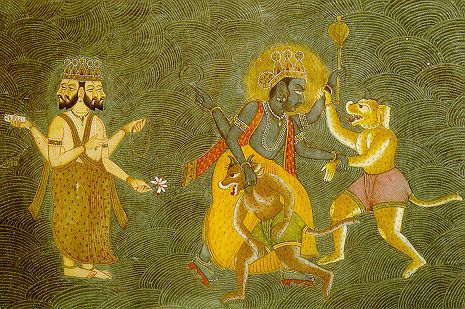
Manushya, rakshasa and Deva
BPHS Sarga 6, shloka-12
" The Navamsha calculation are
-
for a Movable Rashi from there itself,
-
for a Fixed Rashi from the 9th thereof
-
and for a Dual Rashi from the 5th thereof.
They go by designations
- Deva ,
- Manushya ,
- and Rakshasa ,
in a successive and repetitive order for a Movable Rashi.
- Manushya, rakshasa and Deva are the order for a Fixed Rashi,
- while Rakshasa, manushya and Deva are a Dual Rashi's order"
Koeln Sanskrit Lexicon - www.sanskrit-lexicon.uni-koeln.de
A flock, troop, multitude, number, tribe, series, class (of animate or inanimate beings).
body of followers or attendants
troops or classes of inferior deities
-
(especially certain troops of demi-gods considered as Siva's attendants
-
and under the special superintendence of the god Ganesha
Name of Ganesha
A company, any assemblage or association of men formed for the attainment of the same aims
The 9 assemblies of Rishis under the Arhat Maha-vira Jain
A sect in philosophy or religion
A small body of troops (= 3 Gulmas or 27 chariots and as many elephants, 81 horses, and 135 foot)
A series or group of asterisms or lunar mansions classed under three heads
-
(that of the gods, that of the men, and that of the Rakshasas)
(in arithmetic.) a number
-
(in metre) a foot or four instants
-
(in grammar) a series of roots or words following the same rule and called after the first word of the series
-
the g or the whole series of roots of the 2nd class
-
the g or the series of words commencing with garga
disambiguation
-
Gana vs Guna
The Vedic cosmos is divided into
Three Loka
[worlds]
-
Svarga Loka = Heaven = domain of the gods = Devya
-
Prithvi Loka = Earth = domain of the humans = Manushya
-
Mrityu = Narakha Loka = Hell = domain of the demons = Rakshasya
Similarly,
the twenty-seven
Nakshatra = divided into three Gana
[groups]
[Gana] in this sense is an old, esoteric category of psychic character.
-
It is still a valid measurement of compatibility, although its historical meaning is somewhat lost in the mists of time.
-
[Gana] relates to psychic inheritance and levels of communication between the native and one's ancestors.
-
[Gana] describes the accumulation of inherited disposition in the native 's psychic field, which derives from the character of the Ancestral spirits with whom one has a continuing and directive - if largely unconscious - relationship.
Gana for marriage compatibility
Gana of the 27 nakshatra
Gana is only one of the numerous measurements and comparisons which are involved in traditional marriage compatibility analysis.
-
Different Jyotisha lineages have different methods of weighting the various factors.
-
However, there is a general consensus that the characteristics of Chandra's Nakshatra are the key values upon which a pronouncement of compatibility is made.
-
Estimations of Gana compatibility = rather on a par with modern understanding of the virtue of shared cultural values.
-
Other non-Gana measurements are used to evaluate sexual proclivities, wealth match, procreative power, etc.
One principle of marriage compatibility analysis says that the lunar Nakshatra of both spouses should have compatible Gana .
|
Gana (Group-Type) of the 27 Nakshatra |
||
|
Deva |
Manushya |
Rakshasa |
|
Chandra in Shatataraka |
||
More Gana (group)
Rulers of Chandra's Nakshatra should also be mutually friendly or neutral.
-
If both partners' Lunar Nakshatra are ruled by the group Mangala-Surya-Guru they are mutually friendly.
-
If both partners' Lunar Nakshatra are ruled by the group Shani-Shukra-Budha they are mutually friendly.
-
Chandra sees no enemies
however, both the group Budha-Shukra-Shani, and the group Rahu-Ketu do perceive Chandra as their adversary.
-
Therefore Chandra-group should not match with either Budha-Shukra-Shani group Or Rahu-Ketu group .
The Rahu group And Ketu group are always compatible with each other: the three from Rahu-group are internally compatible and the three from Ketu-group are internally compatible; also Rahu-Group and Ketu-group are mutually compatible among the group of six.
-
-
It is possible in some situations that Rahu's or Ketu's lord might be compatible with a member of the any other group, but this arrangement is tricky because almost all the graha actively dislike Rahu. It is a rule of thumb that Rahu-ruled lunar Nakshatra can never be compatible with Nakshatra ruled by Sun-Moon; and
|
Gana of the 27 Nakshatra |
||||||||
|
Surya |
Chandra |
Mangala |
Budha |
Guru |
Shukra |
Shani |
Rāhu |
Ketu |
|
[Chandra in Kṛttikā - Pleyades] Rakshasa |
[Chandra in Rohiṇī - Aldebaran] Manushya |
Deva |
Rakshasa |
[Chandra in Punarvasu - Aditya] Deva |
Manushya |
Deva |
Manushya |
Deva |
|
Manushya |
Deva |
Rakshasa |
Chandra in Jyeṣṭha - Antares Rakshasa |
Rakshasa |
Chandra in Pūrvaphalgunī - Yonī Manushya |
Deva |
Deva |
Rakshasa |
|
Chandra in Uttarāṣāḍha - Vaishva Manushya |
Deva |
Chandra in Dhaniṣṭha - Delphinus Rakshasa |
Deva |
Chandra in Pūrvābhādra Manushya |
Manushya |
Manushya |
Chandra in Shatataraka Rakshasa |
Rakshasa |
Gana + Friendly Lords = assessment steps in marriage matching
Step-one: compare the three-worlds Gana
-
A potential husband =Chandra in Bharani - Yamya
-
His potential wife = Chandra in Uttarabhadra - Andromeda * soothed by wisdom systems * compassionate protectors of hierarchical rules * needs to provide orderly guidance
-
his step is compatibility-positive because the gana of both Chandra placements = manushya 'human' gana.
Now evaluate the friendship of the Nakshatra lords.
-
Chandra in Bharani - Yamya lord = Shukra * needs to carry valuable burdens * safeguards the treasuries * protects precious values
-
Uttarabhadrapada Chandra lord = Shani
-
his step is compatibility-positive because the lords of the Nakshatra, shukra + Shani, are friends.
Now evaluate the friendship of Chandra's rashi lords.
-
Mesha Chandra lord = Mangala
-
Meena Chandra lord = Guru
-
his step is also compatibility-positive because the rashi lords, mangala and Guru, are friends.
Based on these three assessments only (a partial evaluation) this couple would share a quiet, materialistic, steady, and lawful marriage. They can enjoy raising children according to social protocol. They would share pleasure in accumulating wealth, managing a stable and prosperous home, and earning the respect of their community. They would avoid undue risk and shy away from the public eye. They have no interest in celebrity lifestyle.
Example of an Infelicitous Match
By contrast, this same Chandra in Bharani - Yamya man would be advised to decline an offer of marriage from the parents of a woman who was born with Chandra in Kṛttikā - Pleyades
-
the janma Nakshatra of the Kṛttikā-born woman = Rakshasa gana . This is not compatible with his Manushya gana.
-
In addition Krittika's planetary ruler = Surya. Surya = a bitter enemy toward Bharani - Yamya's lord, Shukra.
This couple would experience disagreement about the basic purpose and method of living together. The Krittika person is motivated by a need for praise and attention, and tends toward heroic drama
Bharani - Yamya is quiet and hard-working, searching for harmonious and balanced relationships.
Bharani will not enjoy the constant self-aggrandizement and boasting of the Krittika person; nor will Krittika appreciate Chandra in Bharani - Yamya 's slow and patient style - Krittika wants a spouse who supports one's need for center-stage brilliance and glamor (or the delusions thereof).
Highly compatible lunar Nakshatra groups and pairs:
Rakshasa in the Mangala-Surya-Guru group
-
[Chandra in Kṛttikā - Pleyades]
Mesha portions] + Chandra in Chitra
[Thula portions] + Chandra in Visaka
[Thula portions] + Chandra in Dhaniṣṭha - Vasu [Kumbha portions]
Rakshasa in the Shani-Shukra-Budha group
-
Chandra in Aśleṣa - Naga] + [Chandra in Jyeṣṭha - Antares] calmed by competitive signals * protector of prophetic messages * familiar face of direct announcements * soothed by provocative talk
Rakshasa in the Shani-Shukra-Budha group
Rakshasa in the Shani-Shukra-Budha group
Manushya
- Chandra in Pūrvābhādra- Pegasus [Meena portions] soothedby expansive understanding * protectors of philosophical doctrine * preaches a broad perspective on human needs
-
[Chandra in Bharani - Yamya] needs to carry valuable burdens * safeguards the treasuries * protects precious values
-
[Chandra in Pūrvaphalgunī - Yonī] soothed by sparkling luxury * protectors of musical entertainments * needs brilliant beauty * feels entitled
-
[Chandra in Pūrvāṣāḍhā - Apah] calmed by valued beliefs * protectors of inspirational beauty * needs philosophical harmony
-
[Chandra in Bharani - Yamya] needs to carry valuable burdens * safeguards the treasuries * protects precious values
-
[Chandra in Uttarabhadra - Andromeda] soothed by wisdom systems * compassionate protectors of hierarchical rules * needs to provide orderly guidance
|
Manushya Nakshatra = compatible with Chandra in Bharani - Yamya ? Manushya Gana |
Lord of Nakshatra |
Lord of Rashi |
Rashi and Nakshatra lords
Compatible with |
|
Shukra |
Mangala |
Yes, highly |
|
|
Chandra |
Shukra |
Neutral, look for other qualifications |
|
|
Shukra |
Surya |
Yes, highly |
|
|
Chandra in Uttaraphalguni = Simha Portion |
Surya |
Surya |
No |
|
Chandra in Uttaraphalguni = Kanya Portion |
Surya |
Budha |
No |
|
Shukra |
Guru |
Yes, highly |
|
|
Chandra in Uttarāṣāḍha = Dhanus portion |
Surya |
Guru |
No |
|
Chandra in Uttarāṣāḍha = Makara portion |
Surya |
Shani |
No! |
|
Chandra in Pūrvābhādrapada = Kumbha portion |
Guru |
Shani |
No |
|
Chandra in Pūrvābhādrapada = Meena portion |
Guru |
Guru |
Neutral, look for other qualifications |
|
Shani |
Guru |
Yes |
|
|
Rāhu |
Budha |
Neutral, look for other qualifications |
|
Manushya Nakshatra = compatible with Chandra in Uttarabhadra ? Manushya Gana |
Lord of Nakshatra |
Lord of Rashi |
Rashi and Nakshatra lords
Compatible with Chandra in Uttarabhadra ? |
|
Shukra |
Mangala |
Yes |
|
|
Chandra |
Shukra |
No |
|
|
Shukra |
Surya |
Yes |
|
|
Chandra in Uttaraphalguni = Simha Portion |
Surya |
Surya |
No |
|
Chandra in Uttaraphalguni = Kanya Portion |
Surya |
Budha |
No! |
|
Shukra |
Guru |
Yes |
|
|
Chandra in Uttarāṣāḍha - Vaishva = Dhanus portion |
Surya |
Guru |
No |
|
Chandra in Uttarāṣāḍha - Vaishva = Makara portion |
Surya |
Shani |
No |
|
Chandra in Pūrvābhādra = Kumbha portion |
Guru |
Shani |
No |
|
Chandra in Pūrvābhādra = Meena portion |
Guru |
Guru |
Generally OK |
|
Shani |
Guru |
Yes, highly |
|
|
Rāhu |
Budha |
No! |
|
Manushya Nakshatra = compatible with Chandra in Uttarabhadra ? Manushya Gana |
Lord of Nakshatra |
Lord of Rashi |
Rashi and Nakshatra lords
Compatible with Chandra in Uttarabhadra ? |
|
Shukra |
Mangala |
Yes |
|
|
Chandra |
Shukra |
No |
|
|
Shukra |
Surya |
Yes |
|
|
Chandra in Uttaraphalguni = Simha Portion |
Surya |
Surya |
No |
|
Chandra in Uttaraphalguni = Kanya Portion |
Surya |
Budha |
No! |
|
Shukra |
Guru |
Yes |
|
|
Chandra in Uttarāṣāḍha - Vaishva = Dhanus portion |
Surya |
Guru |
No |
|
Chandra in Uttarāṣāḍha - Vaishva = Makara portion |
Surya |
Shani |
No |
|
Chandra in Pūrvābhādra = Kumbha portion |
Guru |
Shani |
No |
|
Chandra in Pūrvābhādra = Meena portion |
Guru |
Guru |
Generally OK |
|
Shani |
Guru |
Yes, highly |
|
|
Rāhu |
Budha |
No! |
Deva
-
Chandra in Svatika + Chandra in Aśvini
Hi Barbara,
Hope you're well and enjoying the New Year!
I had a question regarding traditional Kundli matching. I know that for instance, you mention that Rahu and Ketu ruled moons are the most
compatible together. However, several of these moon pairings seem to have some kind of dosha together like Swati & Shatataraka which would
make it hard for them to sustain a partnership or create misfortune?Also, they lack yoni or are of different ghanas - deva vs. rakshasa
What is your interpretation of classical kundli matching?
I know other things come into play such as the navamsa but I was just curious about your take on the rules of kundli matching and if other
planets between male and female are also compared, besides the moon, which might give more flexibility??
Namaste,
Thanks for your questions about interpersonal compatibility and traditional marriage matching.
First of all I would say that there are so many variations of classical kundli matching in the subcultures of the cities and villages of India and its diaspora that no generalizations apply. Much of this technology is thinly veiled village politics and not the Jyotisha vidya at all. Look in Lal Kitab for a sample of remedies that are suggested to correct a marriage imbalance-seeking-a-remedy = tying a string to a tree at midnight or burying a silver coin near a riverbank or smashing a clay pot (very popular and cheap) to compensate for poor yoni-guna-gana etc. Then the marriage goes forward sanctioned as astrologically balanced.
Maybe you will want to study all the weights and measures of the classical kundli traditions (plural) and write a book about it. That would be interesting and a great service to students of Jyotisha. However, much of the classical weighting is idiosyncratic and inconsistently applied due to the inescapable presence of ulterior motives in marriage matching. I hardly use the finer weights. In nature, everything has a dosha. The goal is not to avoid dosha. The goal is to recognize it and handle it proactively not reactively.
When he came to visit USA as an elderly man from a deeply traditional culture -- having seen the world endure cataclysmic changes -- 300 Combinations 1912-1998 Jyotiṣika BV Raman used to say that both arranged marriages and self-chosen marriages tend to fail at a rate of about 50%.
This from a man who was a living library of Jyotishashastra, who had determined thousands of marriage contracts, and knew hundreds of Jyotishavidya measurement techniques which he could read in three scriptural languages.
His own marriage was pristine not because of its astrological auspice (a look at his nativity will confirm) but rather because he consciously applied the moral discipline to make it so.
The present practioner does not indulge in a big machine of minute calculations in order to perfect a marriage match. Yet please do be encouraged to pursue research into these techniques, collecting on your way as much empirical data as possible, in order to test and validate the old traditions.
That would be a wonderful service to the modern expression of the samaya-vidya!
Best wishes for your continuing success in Jyotisha studies,
Sincerely, bP Lama
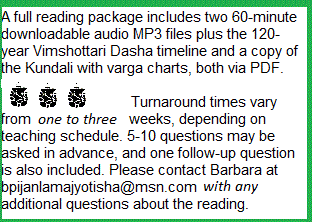
[How Readings Work] = [Sample Sacred Jewels Ratna Recommendation] = [Seva]
file update =
08-Nov-2025

[Copyright © 1994-2024 by Barbara Pijan Lama] = [Contact] = [How to Request a Jyotishavidya Reading]
Barbara Pijan Lama Jyotishavidya Vedic Astrology Surya Sun Chandra Moon Mangala Mars Budha Mercury Guru Jupiter Shukra Venus Shani Saturn Rahu Ketu Graha Planets Dasha Timeline Calendar Nakshatra Navamsha Marriage Children Treasury Career Spiritual Wisdom Cycles of re-Death and re-Birth
The information on barbarapijan.com , including all readings and reports, is provided for educational purposes only. Wishing you every happiness and continuing success in studies!
